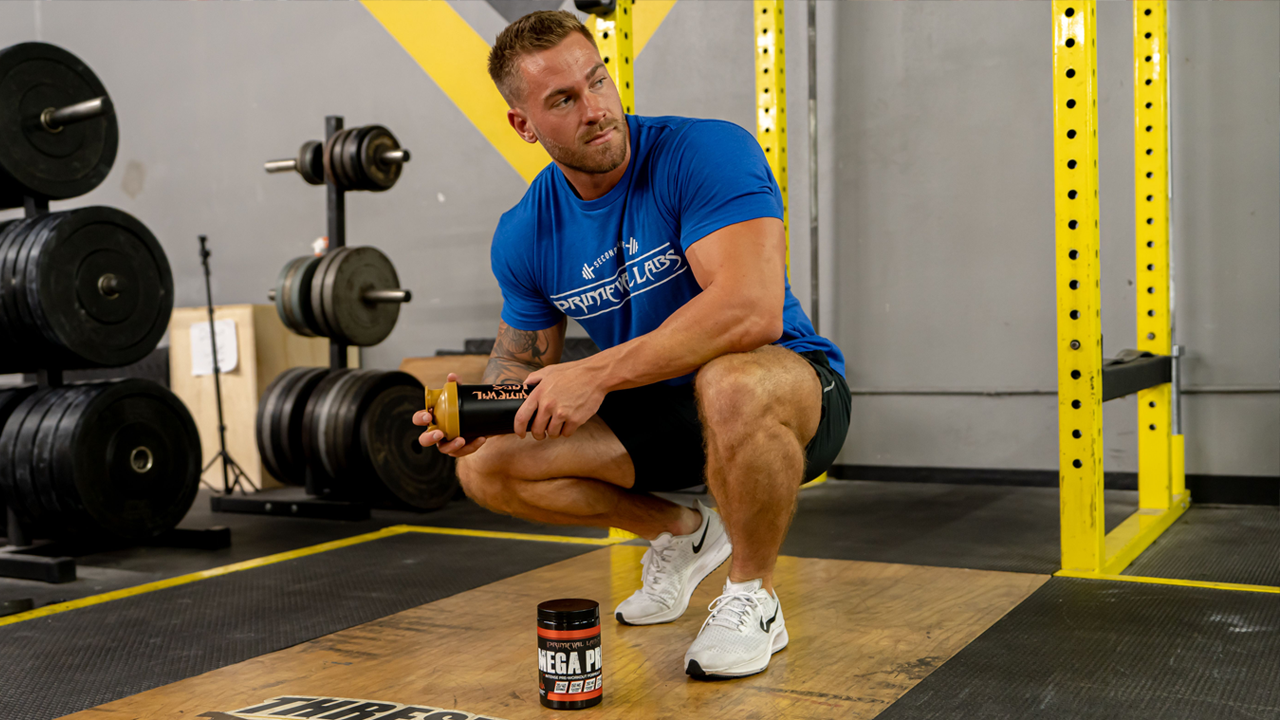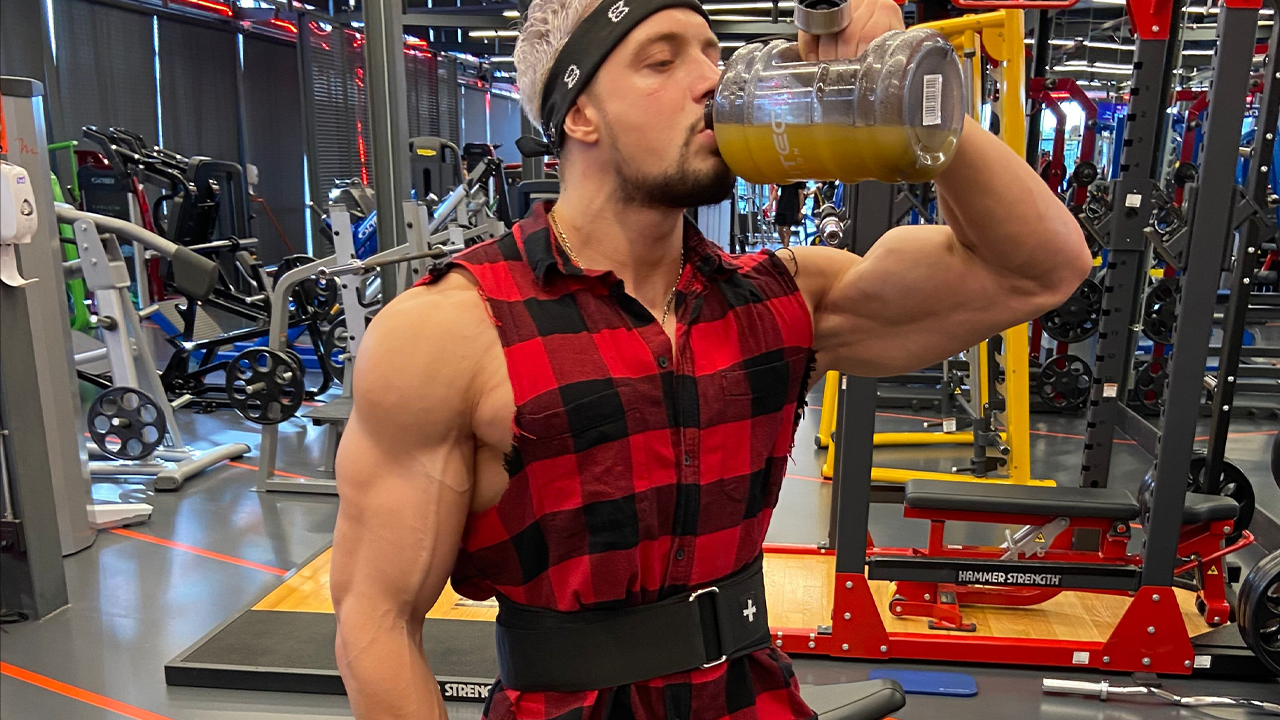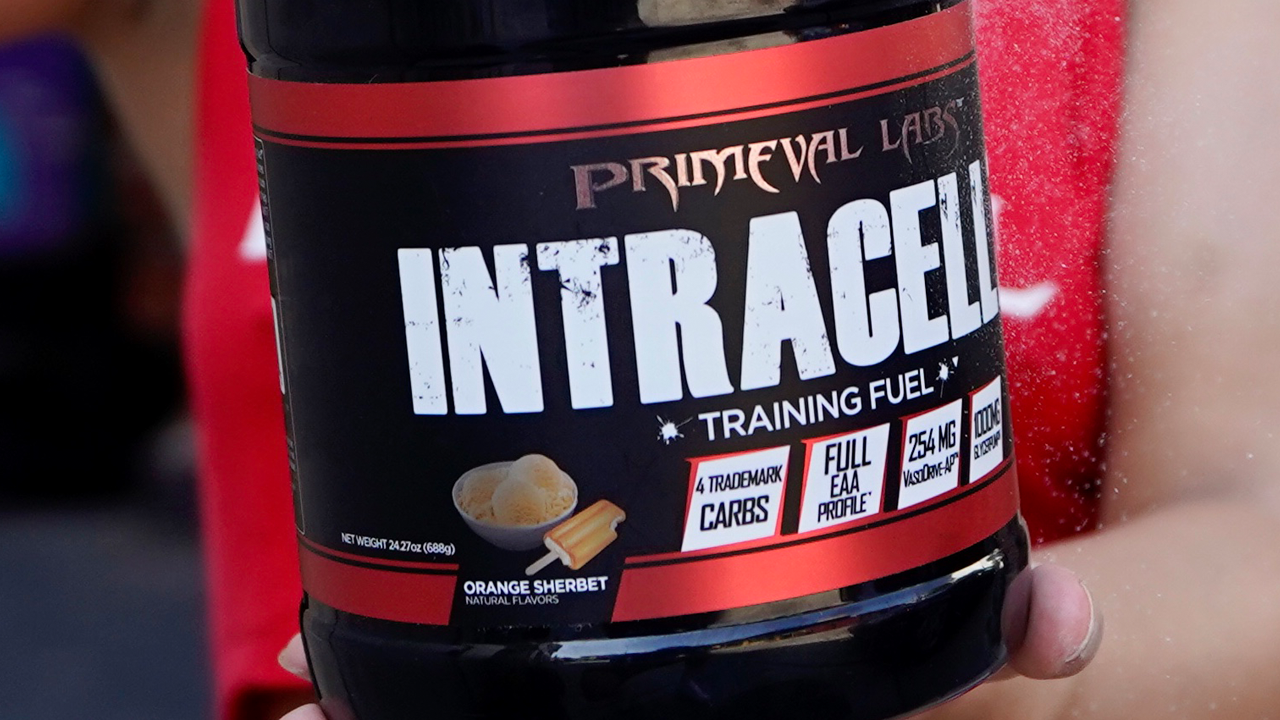We’re back with another entry in our Huge in a Hurry: 30 Minute Shoulder Workout for Mass series. This time we’re focusing on a muscle group that most lifters need to get bigger, but few devote the time, attention, and intensity required to grow -- DELTS.
If you’re strapped for time (or just don’t feel like spending 60-90 minutes in the gym), this is the workout to grow boulder shoulders in rapid fashion.
LET’S GO!
Pump Up the Volume with Mega Pre!
Mega Pre is a premium-quality pre workout supplement formulated to support mental focus, and promote greater performance. The product contains L-citrulline, VasoDrive-AP, and GlycerPump along with several other research-backed ingredients that help support mental acuity, energy, hydration, pumps, and strength for better training sessions.
30 Minute Shoulder Workout for Mass
|
Shoulder Workout |
||
|
Exercise |
Sets |
Reps |
|
Rear Delt Fly |
4-5 |
15-20 |
|
Lateral Raise |
4-5 |
15-20 |
|
Dumbbell Overhead Press |
4-5 |
10-12 |
|
Upright Row |
4-5 |
12-15 |
Note: Perform one exercise right after the other with no rest between exercises. Rest 2 minutes between each giant set and repeat the giant set for a total of 4-5 rounds.
Shoulder Workout Pointers
Just as we did in the 30 minute back workout for mass, we’re going to take advantage of some intensification techniques to help maximize every minute that you’re in the gym for optimal muscle gain.
For this shoulder workout, the intensification technique that we’re basing this workout around is the giant set.
Giant sets are a particularly badass, and brutal, advanced training technique where you string together four or more exercises in a row with no rest until all movements are completed.
Not only do you create massive amounts of time under tension and metabolic stress, but you also create a great cardiovascular training effect. This can help boost metabolism all while helping to build rounder delts.
You can organize giant sets a few different ways.
One way is to begin with isolation movements, which serve as a sort of pre-exhaust technique.
This not only helps establish a stronger mind-muscle connection, but also by pre-fatiguing the target muscle, will allow you to reach failure using lighter weights, which can help reduce stress on joints, ligaments, and connective tissue without sacrificing muscle gains.
Pre-exhaust and giant sets are an exceptional training option for those training at home with limited equipment (as well as those strapped for time).
Another way to organize giant sets is to begin with a compound movement (like the overhead press) and then finish off with a sequence of isolation movements to burn out the muscle fibers and get a massive muscle pump.
Both ways can work, it’s really a matter of personal preference, equipment availability, and goals.
Emphasize the Rear Delts
Shoulder workouts tend to overemphasize movements for front and side delts (overhead presses, laterals, front raises, etc.) much to the dismay of the rear delts.
But, if you really want to achieve that 3D look in your upper body (as well as preserve the health of your shoulders), it’s imperative to properly train the rear delts.
Neglecting to train the rear delts can create an imbalance between the front and back muscles of the shoulder.
Moreover, most lifters also tend to perform too much benching and not enough back training, which can lead to weak rear delts, future shoulder problems like rotator cuff tears, impingement, etc, and not to mention horrific posture.
The rear delts also serve as important stabilizers for your shoulders, which means that if you want healthy, strong shoulders, then you need to prioritize rear delt training!
As such, we begin today’s shoulder training session with rear delt flyes.
Lateral Raises
Lateral raises are one of the most butchered exercises around. Whether it’s using momentum to lift the weights, not controlling the negative, or lifting in the wrong plane of motion, most lifters simply don’t reap the benefits of this exercise.
To get the most muscle-building bang from the side lateral, it needs to be done in the scapular plane and the shoulder blade needs to be allowed to naturally move with external load during the exercise.
Too many lifters try to “lock down” the scapula for fear that not doing so will make the traps take over.
But, some of the primary functions of the scapulae are to rotate upward and downward.
Allowing the scapula to move as they naturally would also can create more output and stress on the delts when doing the work.
So, when you’re performing your lateral raises, keep these tips in mind:
- Allow a slight forward lean.
- Don’t raise your arm straight out to the side. It should be slightly forward to allow for natural scapular movement.
- Don’t lock the shoulder blades down and back.
- Initiate the movement with the elbows.
- Control the descent.
- Don’t use momentum or body English.
- Create a slight bend in the elbow and then lock that position in place to perform your lateral raises. When you start opening and closing the elbow, you start to involve the triceps and reduce tension on the middle delt.
Overhead Press
After the shoulders are warmed up and full of blood from the rear delt flyes and lateral raises, it’s time to hammer the entire shoulder girdle with some overhead presses.
We’re partial to dumbbell overhead presses as the dumbbells allow for lifters to find the optimal pressing position that best suits their anatomy and anthropometry.
Additionally, make sure to use a full range of motion. Too often, gym bros have a tendency to use short, incomplete, and choppy ranges of motion when performing their exercises. Most often this is due to trying to impress others in the gym. But, what it’s really doing is short-changing your ability to build as much muscle as possible as quickly as possible.
If you don’t have access to enough weight to fail in the given rep range listed above, you can even perform more reps (up to 25-30 reps), or you can alternatively perform pike presses or handstand push ups.
Upright Row
The upright row is an exercise that is criticized and avoided by many due to the belief that it’s a “shoulder destroyer.” Truth be told, any exercise can cause irritation or lead to injury if performed incorrectly.
When performing the upright row, we prefer to use dumbbells as it allows the wrists and elbows to move more naturally and not remain in a fixed path as they would be if you were performing the movement with a barbell.
Pull only as high as is comfortable, which typically means pulling until your elbows are inline with your shoulders. It may also help to pull the dumbbells up and out as opposed to straight up under your chin, which can cause internal rotation of the shoulders and more stress on the shoulder joint.










Leave a comment
This site is protected by hCaptcha and the hCaptcha Privacy Policy and Terms of Service apply.